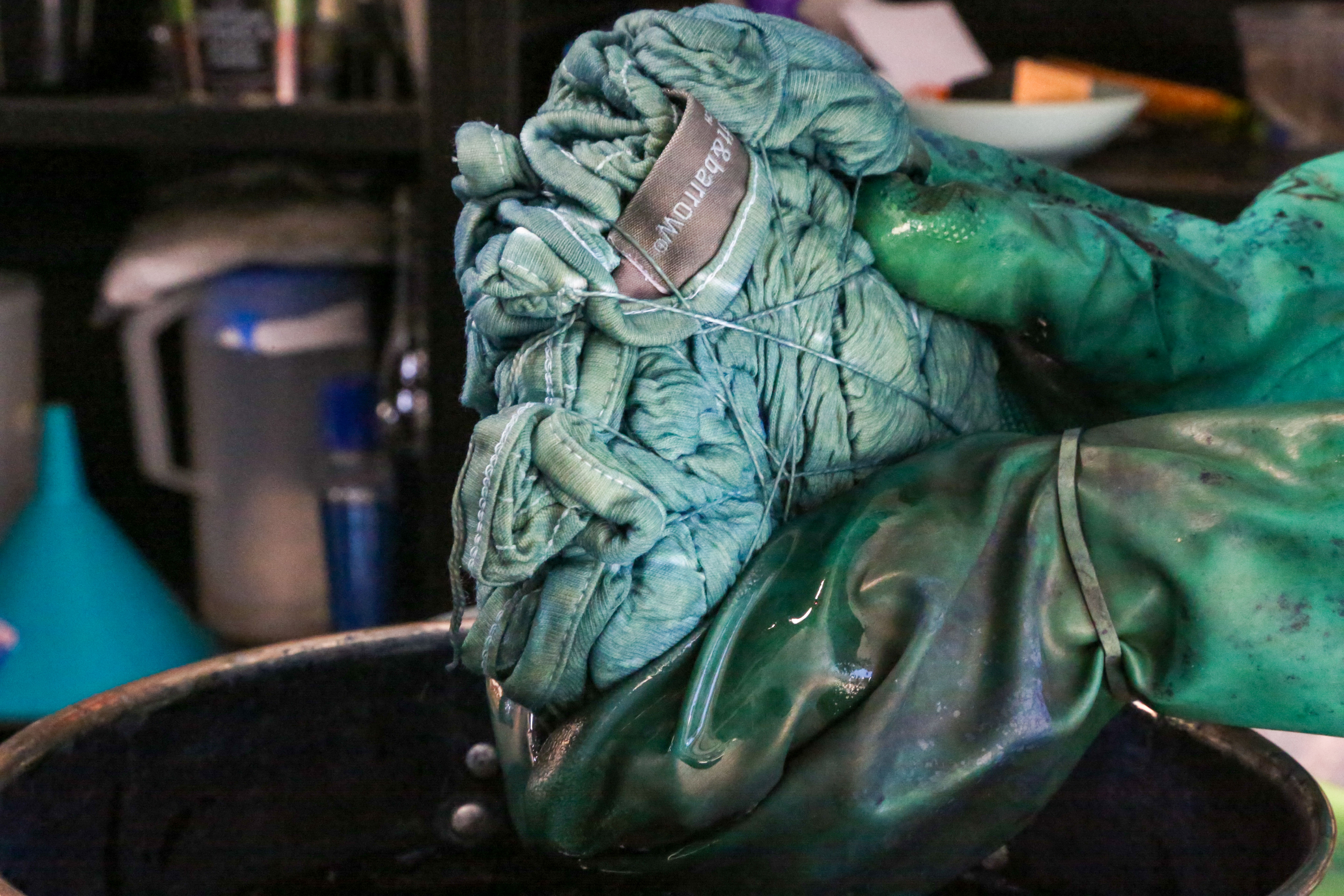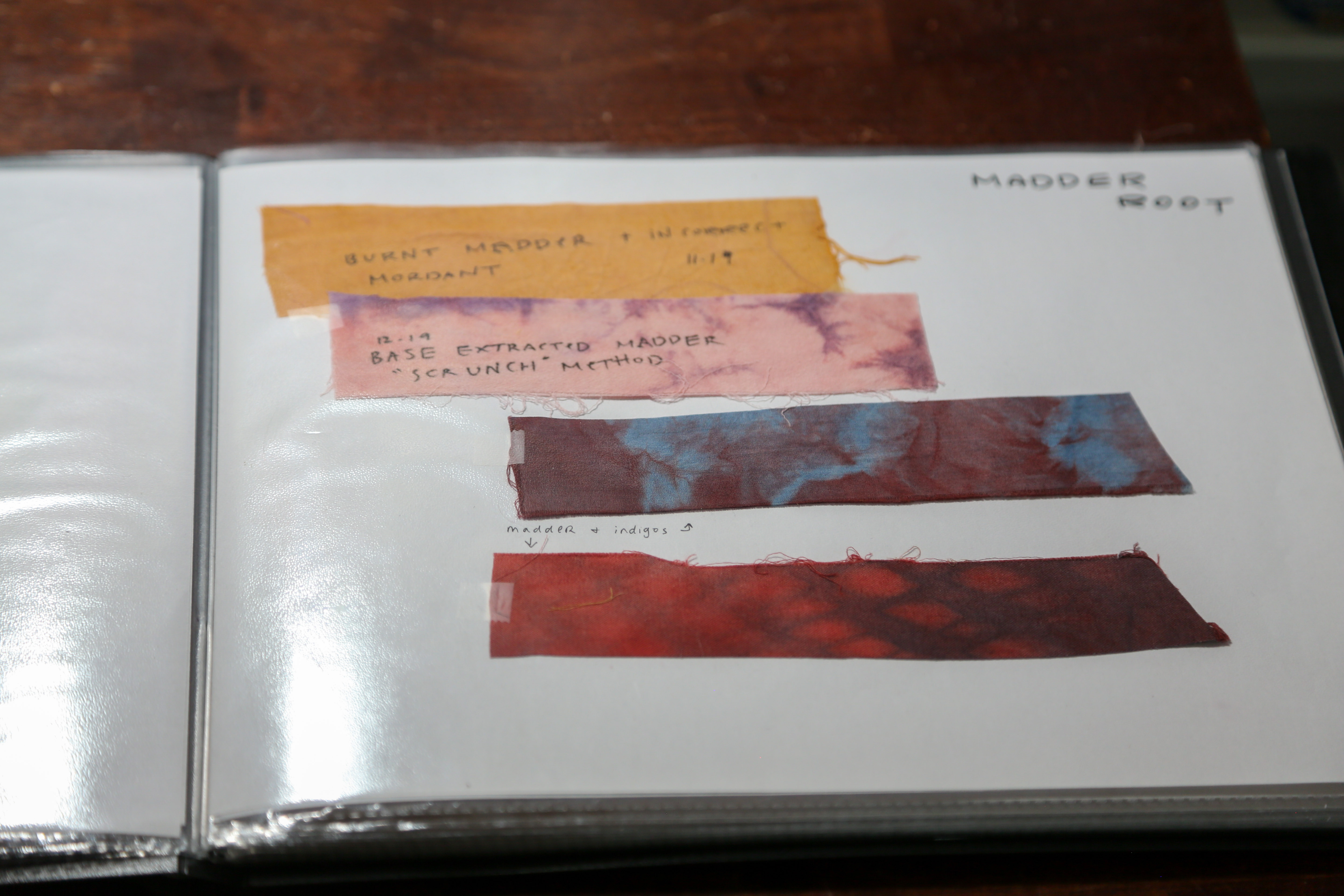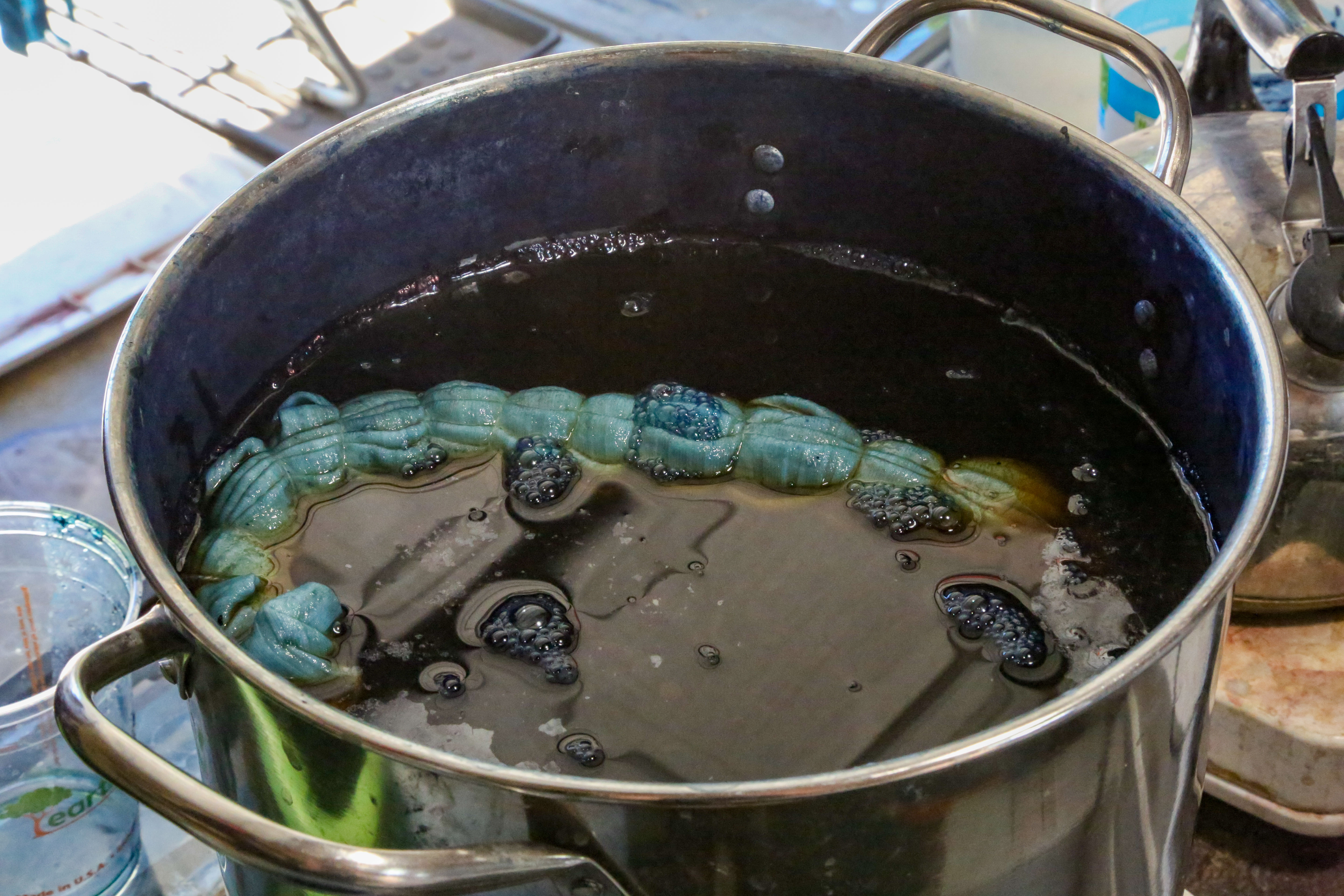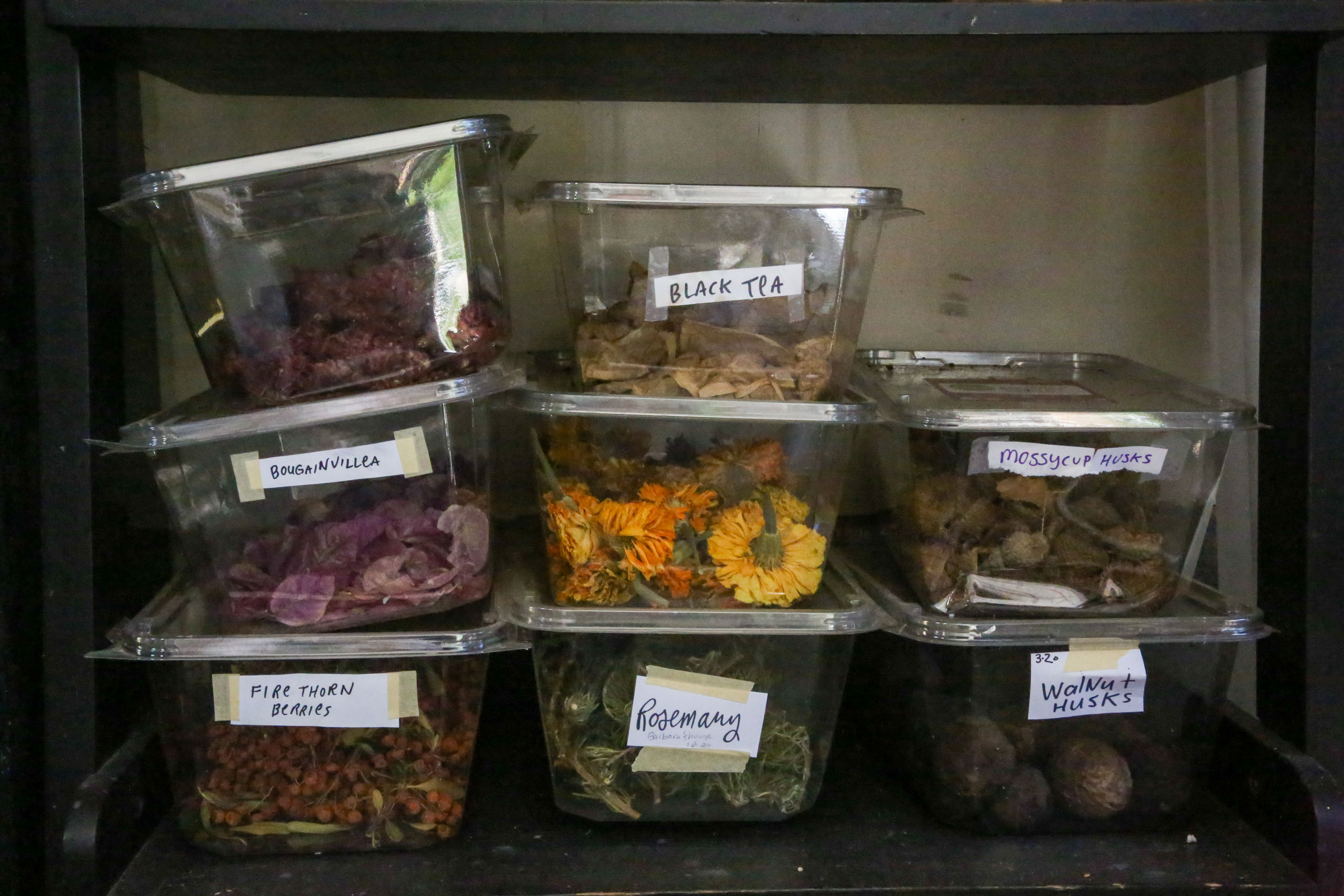Leah Rich is a resourceful product designer, a skilled dye artist, a gifted gardener and a slow fashion advocate all wrapped up into one community creator. Her textile design studio, Round Trip Goods, was founded in 2020 and reflects her regard for nature and enthusiasm for color.
Planting Roots
Although Rich didn’t encounter plant dyes until later in life, her appreciation for the earth’s natural processes has been present since childhood.
“I always loved playing outside and getting dirty,” Rich said. “I cared about bugs, plants and flowers.”
Originally from Louisville, Kentucky, Rich embarked on an adventure out west as a young adult and found herself in Denver, where she earned her bachelor’s degree in industrial design. After working in the fast-paced industry for years, she realized that her work environment didn’t align with her values.
“It was really wasteful,” Rich said about the environmental impacts of the product design industry. “We were just filling dumpsters with trash every day.”
Rich quit her job in 2019, about a year before Round Trip Goods was born. Despite her concerns about working in product design, she knew she didn’t want to give up her passion for art and design. So she took art classes during her time off from work to stimulate her creativity. It was during one of these classes that she discovered plant dyes.
“Everything kind of clicked for me,” Rich said. “When I figured out that I could dye fabric naturally and make designs with biodegradable things, it was like a match made in heaven.”
Nature’s Role
Rich began experimenting with natural dyes in her spare time, fascinated by the colors nature could bring to fabrics.
“The variations of color I found were amazing,” Rich said. “One plant can have up to 100 or more color molecules. With synthetic dyes, there’s one molecule and you can only get one color.”
Rich is mostly self-educated with the help of many library books on the subject of plant dyes. Her favorite book, Botanical Inks by Babs Behan, is her partner in crime when she’s researching natural dyes and dyeing techniques. She has become knowledgeable of the science, history and folklore behind natural dyes and does her best to honor where different plants and dyeing practices originate from.
Plant-dyeing can be tedious and takes days to accomplish. Rich starts the complicated process by sourcing cotton items from local thrift stores.
“I chose cotton because I wanted to use a material we already have a lot of. It’s something I can put to use so that it doesn’t get wasted,” Rich said.
After acquiring thrifted pieces for reuse, Rich undergoes a natural scouring process. To dye the fabric, the fiber has to be stripped away of its soft, protective layer. The fabric comes out a bit coarser, but raw and ready to be dyed.
As for the actual dyeing, different processes are used when working with different materials and plants. Rich’s connections in the Denver community provide her with the natural materials she uses to create color, such as excess potato skins from a local farmer’s market. Sometimes her friends invite her to forage through their plants. Otherwise, she forages the plants from her own garden.
“Getting to grow my own dye plants is really satisfying for me,” Rich said.
Rich’s green thumb has helped her access the plants she needs for dyeing purposes. She has grown indigo, coreopsis, safflower, morning glories and many more. In her plant-dyeing booklet, she keeps track of how colors come out differently depending on the dye treatment. Many factors can affect the eventual color, including temperature, PH levels and exposure to light.
“A big element in my work is letting there be room for imperfections,” Rich said. “I want to let nature and chemistry have a role in the design, which creates a lot of variation.”
Because of nature’s role in the process, every item from Round Trip Goods is one-of-a-kind. Many of Rich’s designs include her painting and printing skills. She has also altered this process to protect the environment. She creates biodegradable iron oxide paint to hand-paint and print with.
Another important component of Round Trip Goods is that every design is unisex and can be worn by anyone. While Rich includes measurements and sizing details in product descriptions, she does not categorize her designs according to gender.
Why Make the Round Trip?
What makes Round Trip Goods so unique to the Denver market is how sustainability and ethics are carefully considered during production. In her garage-turned-dyeing-studio, Rich finds ways to reuse food containers and other materials to minimize her environmental impact.
“I’ve always cared about the planet, but never sought out tools to be active in making changes for good,” Rich said. “I thought that if I could create my own company, I would use sustainable, natural and reused materials.”
As Rich continues to educate herself more on the impacts of fast fashion and overproduction, she feels even more compelled to create an alternative for shoppers.
“There are all these other options out there to consider, like thrifting or buying less. There’s value in keeping our things longer and taking good care of them,” Rich said.
Rich’s Slow Fashion Zine illustrates how consuming slowly, ethically and sustainably can contribute to a kinder future for the fashion industry. Though she encourages shopping sustainably, she also acknowledges that ethical fashion is not accessible or affordable to everyone.
Not only is Rich an advocate for slow fashion, but also slow living. After working in the industrial design world, she realized she wanted to return to a more peaceful lifestyle that wasn’t just about how much she could hustle. She now sips tea and gardens while working at her home studio, accompanied by her husband and two dogs. Every day she is delighted by the small details of her work, whether that be tending to her garden or watching indigo dye turn from mossy green to deep blue.
“It’s like returning to childhood,” Rich said. “I get to be outside and make art again.”
At the moment, Rich is focused on creating quality goods to display at fall markets later this year. As Round Trip Goods continues to innovate the sustainable fashion scene, you can stay up-to-date on new designs and pop-up shop appearances through Instagram.






